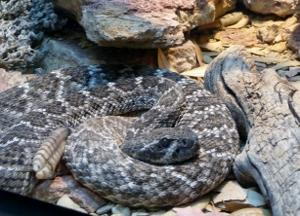Happy St. Patrick's Day!
- posted: Mar. 17, 2015

Did St. Patrick Really Rid Ireland of Snakes?
Today we celebrate St. Paddy’s Day with all things green and a nod to the Irish. What does this have to do with veterinary medicine? Well—nothing. But St. Patrick is credited with removing all the snakes from Ireland so I thought it would be a good day to talk about snakes. Some people loathe and fear them, others love them. Whatever your stance, you have to admit, snakes are pretty fascinating.
There are nearly 3000 different species of snakes in the world, but there are no snakes in Antarctica, Iceland, Greenland, New Zealand or Ireland. The largest snake is the reticulated python which can grow to 30 feet in length! The smallest is the 4 inch Barbados thread snake. Snakes are carnivores eating small mammals, birds, frogs and toads, other reptiles, and sometimes insects so they can be beneficial in reducing rodent and insect populations
Pennsylvania has 18 species of non-venomous snakes and 3 venomous snakes. The most common venomous snake in PA is the Northern Copperhead. We also see occasional Timber Rattlesnakes. The other venomous species is the endangered Eastern Massasauga rattlesnake which lives in only a few counties in western Pennsylvania.
Dogs and cats may occasionally be bitten by copperheads in our area. While a bite certainly could be fatal, the few limited cases I have seen in the past were mild and required only supportive care with IV fluids, pain medications, and antibiotics. An antivenin does exist and may be used to treat very severe cases. Thankfully, snake bites are not very common in Red Lion!
How do you know if your pet has been bitten by a snake? The most common bite sites would be the leg or muzzle and you may see the puncture wounds made by the fangs but more likely you would see swelling around the area. Pets are usually very painful around the bite and may be lethargic or have vomiting. Non-venomous snake bites are not harmful, but could become infected, so, if you suspect your dog or cat has been bitten by a snake, see your vet!
Back to St. Patrick--So, why are there no snakes in Ireland? Is the legend of St. Patrick banishing the snakes really true? It’s a good story, but science suggests that there were never any snakes in Ireland to begin with. A combination of cold temperatures during the ice age and the early loss of a land bridge to Britain creating a water barrier prevented snakes from colonizing Ireland. In short, it was too cold for them to live on the Emerald Isle, and then they couldn’t cross the sea to get there. So, if you’re not a fan of snakes, you may want to consider a trip to Ireland this St. Patrick’s Day! Hope you all enjoy the “Wearin’ ‘O’ the Green” today!
This blog brought to you by the Patton Veterinary Hospital, serving Red Lion, York and the surrounding areas.
Location
Patton Veterinary Hospital
425 E Broadway
Red Lion, PA 17356
